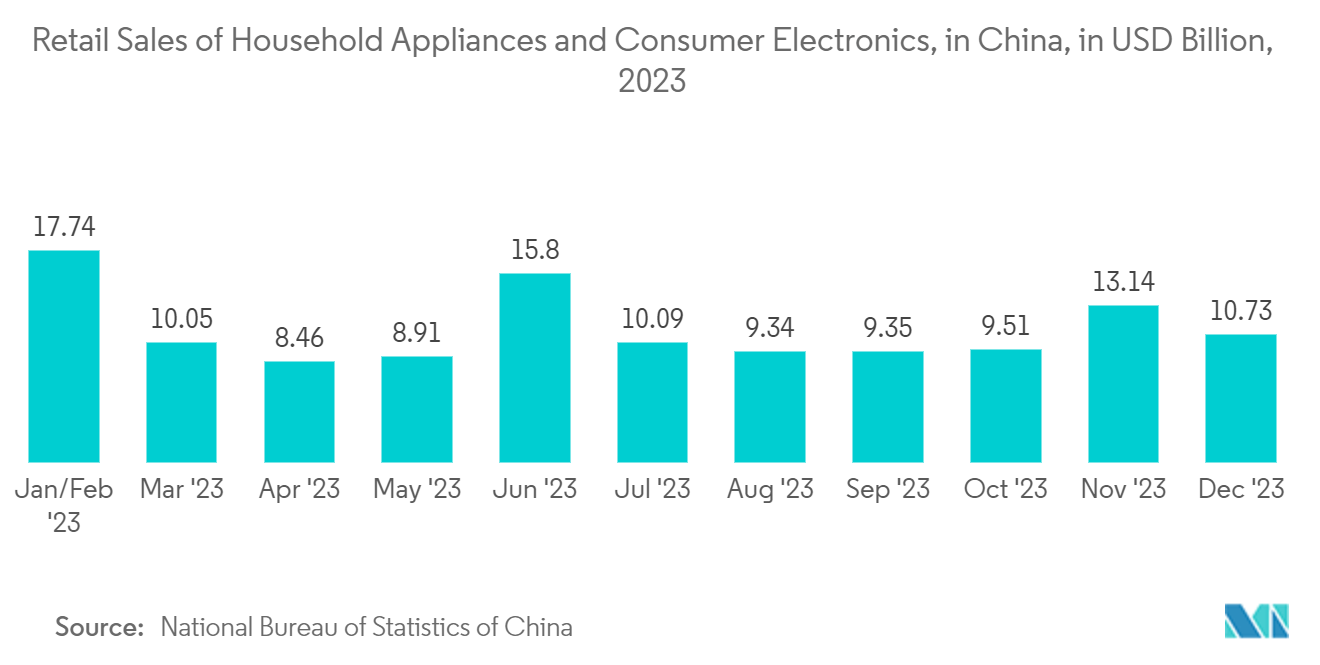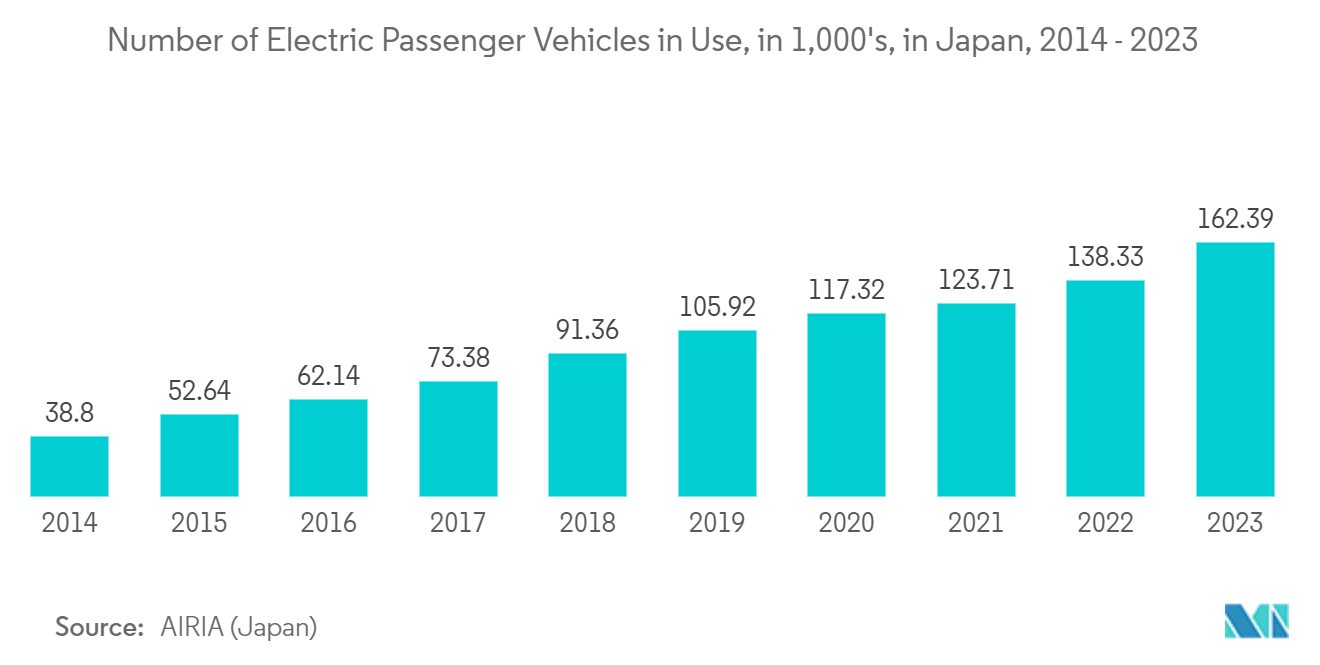Market Trends of Asia Pacific Flash Memory Industry
NOR Flash Memory Segment is Expected to Hold Significant Market Share
- The rise in the trend of portable electronic devices combined with the growing penetration of advanced technologies, like IoT, among the population across nations such as China, Japan, India, Korea, and others acts as one of the major factors driving the growth of the NOR flash memory.
- Notably, the promise of smart cities has captivated the APAC region's technology industry. As per the recent report by Equinix, 'Smart Cities: Shifting Asia,' UBS projects that APAC will account for 40% of the global addressable market growth for smart city projects, or USD 800 billion, by 2025. This rapid urbanization drives IT buildout and Interconnection Bandwidth growth to sustain APAC's expanding digital market. The region is positioned to expand how AI products think and learn, to build networks of smart cities and hospitals through IoT's enhanced data depth, to help autonomous vehicles process information and make split-second decisions as they learn new roads and situations, to discover new worlds through augmented reality, and to lift communities out of the dark by bringing Big Data to light, which need flash memory to work efficiently.
- Moreover, the growing manufacturing sector in the region will likely provide significant growth opportunities to likelyOR Flash Memory. For instance, according to the Japan External Trade Organization (JETRO), the manufacturing sector in Japan has helped the country rise to one of the largest economies in terms of GDP and to the status of one of the "Manufacturing Superpowers." The Japanese government estimates that the GDP from manufacturing in Japan will increase by 9% from 2020 to 2021, from JPY 108.093 trillion ( USD 0.72 trillion) to JPY 117.790 trillion (USD 0.78 trillion) , and it will reach JPY 119.086 trillion (USD 0.79 trillion) by the end of 2023.
- In addition to automobiles, industrial robots, and other IoT equipment also benefit from the code execution capabilities of NOR flash memory. According to IFR, In 2023 the industrial robot market is expected to grow by 7% to more than 590,000 units globally.

Automotive segment expected to attain significant growth
- Embracing the digital revolution in earnest, leading businesses across sectors today are decisively investing time and effort to enrich their offerings with innovative digital tools. The automotive sector has been no different, with OEMs actively pivoting toward adopting digitized and connected technology to deliver uniquely elevated customer experiences.
- Over the past few years, the demand for Flash memory for automotive applications has consistently risen. The initial uses of Flash included applications like infotainment and engine control. However, with advancements in automotive computerization continuing to progress, flash memory is seeing use in a broader range of various automotive applications. Particularly, there has been a rapid growth in the demand for NOR Flash memory for use in advanced driver-assistance systems (ADAS), digital instrument clusters, and infotainment systems.
- The rising awareness about the importance of ADAS in reducing car accidents is one of the primary factors driving the demand for these systems in recent years. Moreover, government regulation in the automotive industry in various countries directly impacts the way cars look, the design of their components, the safety features incorporated, and the overall performance of any given vehicle. As a result, government regulation also significantly affects the automotive business.
- For instance, in October 2022, the Transport department in India made many amendments to vehicle safety by including various vehicle safety features in two broad categories: active and passive safety. Hence, all carmakers must introduce these safety features to sell their cars in India. These factors have further promoted the role of the need for Electronic Control Units (ECU), which further involves the usage of flash memory.
- Currently, many ADAS applications utilize cameras to assist drivers in identifying nearby hazards. Sensing cameras help provide drivers with automated collision avoidance, lane changing, parking, and more applications. The use of sensing cameras is expected to expand, with cars becoming increasingly autonomous. As sensing cameras need even more complex processing than viewing cameras, highly-efficient SoCs are expected to support this advanced technology. The demand for high-density and high-performance Flash Memory will likely continue to grow in conjunction with this increase in program size.
- The surge in electric vehicles (EV) and hybrid vehicles, accompanied by the emergence of Graphic Instrument Cluster (GIC), infotainment systems, and fully autonomous driving solutions, has created a need for the flash memory market. According to AIRIA (Japan), In 2023, in Japan, the number of electric passenger vehicles in use is approximatly 162.39 thousand, displaying an increase over the past decade.


